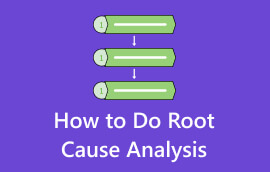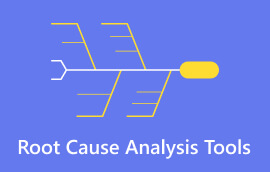A Guide to Root Cause Analysis Examples and Templates
To find an appropriate solution for a problem or issue, many use root cause analysis. Throughout the years, it has become a helpful method in various organizations. If you’re planning to create one, yet you do not have any references, keep reading here. In this post, we will walk you through root cause analysis examples and templates you can try. Not only that, we have also shared the best tool you can use for your problem-solving needs. Without further ado, let’s start.

- Part 1. Best Root Cause Analysis Tool
- Part 2. Root Cause Analysis Templates
- Part 3. Root Cause Analysis Examples
- Part 4. FAQs About Root Cause Analysis Template and Example
Part 1. Best Root Cause Analysis Tool
Before we head to the templates and examples, you might be interested to know a reliable tool to use. If so, we highly recommend MindOnMap. It is a platform that lets you create different visual representations that you desire. It provides layouts such as flowcharts, fishbone diagrams, org charts, and more. Not only that, it lets you use unique shapes and icons to add more flavor to your work. In addition to that, you can insert photos and links, making your visual presentation more personalized. What’s more, it is infused with an auto-saving feature. It means that the tool prevents you from losing any vital data with your work. With it, you can visually and creatively present your root cause analysis. More importantly, you can make a root cause analysis fishbone template and other RCA charts here.
Secure Download
Secure Download

Part 2. Root Cause Analysis Templates
Let’s now move on to the templates you can use as a reference. Get to know them one by one to choose the best fit for your needs.
1. 5 Whys Root Cause Analysis Template
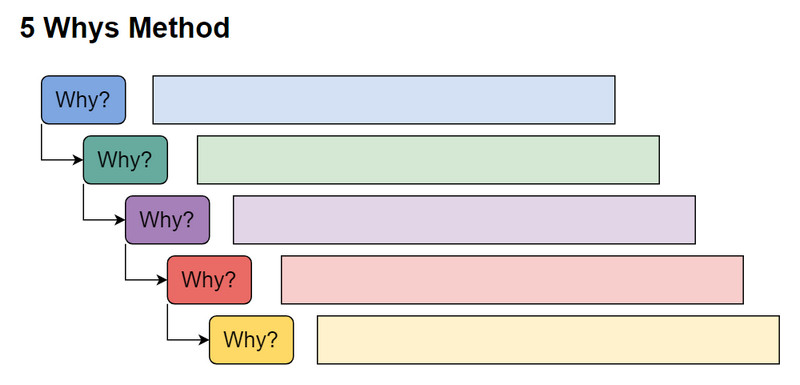
Get a detailed 5 Whys root cause analysis template
2. Root Cause Analysis Fishbone Template
The RCA Fishbone Diagram is also known as Ishikawa or Cause-and-Effect Diagram. It is a visual tool utilized to identify potential causes in a systematic way. It looks for the contributing factors to a specific problem or effect. The diagram resembles a fish's skeleton, with a central spine representing the problem. Then, branches off of it represent the various categories of potential causes.

Get a complete root cause analysis Fishbone template.
3. Simple Root Cause Analysis Template Word
If you simply need a simple root cause analysis template, we’ve also got you covered! With one of the most used Microsoft software, which is Word, you can perform root cause analysis. If you prefer a document type of RCA, then you can use the Word template below. It will guide you to create a straightforward root cause analysis.
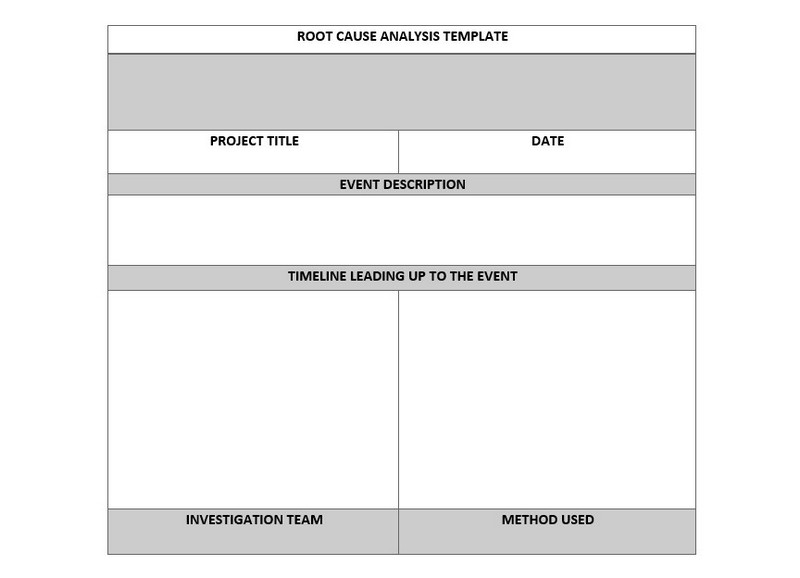
4. Root Cause Analysis Template Excel
Another Microsoft you can use is Microsoft Excel. Excel is a versatile platform that allows you to organize data and conduct analyses. Fortunately, it can also be used in a root cause analysis. If you’re familiar with how it works, you can easily create your RCA. But if not, it may take time to do it. Below is a root cause analysis template created in Excel.

5. PowerPoint Root Cause Analysis Template
Finally, we have the PowerPoint RCA template completing the most popular Microsoft software. PowerPoint is usually used in creating impactful and clean slideshows. It is infused with various templates, themes, shapes, etc., to use for your slideshow. And with it, a template for root cause analysis has also been made. You can check out the template below in case you consider using Microsoft PowerPoint for your RCA.
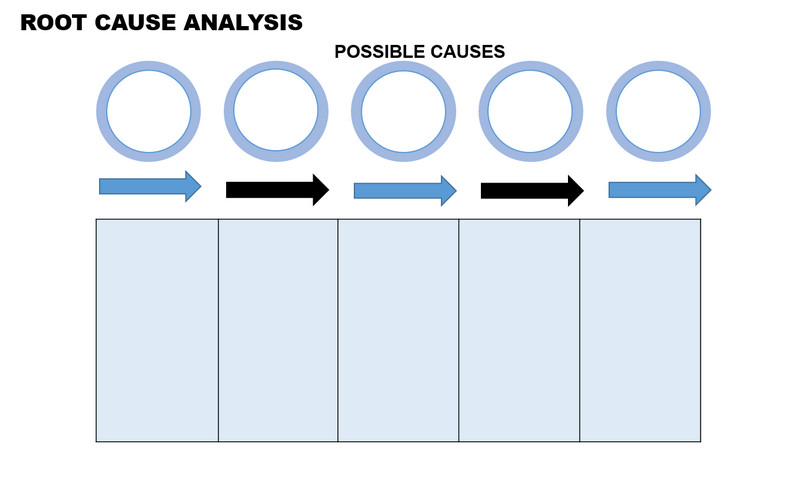
Part 3. Root Cause Analysis Examples
Example 1. Root Cause Analysis Example in Healthcare
Problem: Patient Fall in Hospital
In a hospital setting, a patient fall incident occurred where a patient experienced a fall while in their room. Despite measures in place to prevent falls, such as bed alarms and monitoring by staff, the patient sustained an injury due to the fall. The incident raised concerns about patient safety. Also, it highlights a need to investigate why such events occur. The main goal is to prevent similar incidents in the future.
The RCA process was initiated to delve into the circumstances surrounding the patient's fall. RCA analyzes potential causes and ultimately identifies the primary reason behind the incident. Through careful examination, it was discovered that the root cause is due to equipment malfunction. It is also related to inadequate maintenance, specifically a malfunctioning bed alarm. It failed to alert staff when the patient attempted to get up unassisted.
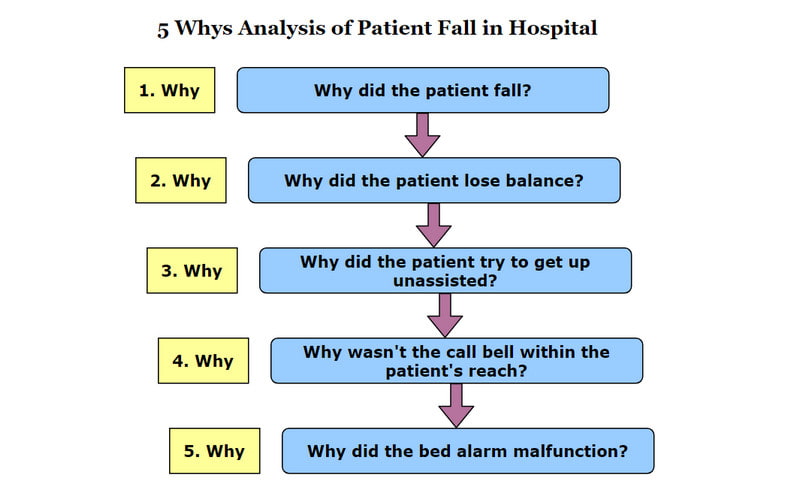
Get a detailed root cause analysis healthcare example.
Example 2. Root Cause Analysis Example in Manufacturing
Problem: Defective Product in the Manufacturing Line
This time, the occurrence of a defective product signifies a disruption in the production process. Hence, it results in a product that does not meet quality standards or customer expectations. This problem can lead to increased production costs, waste of resources, or potential customer dissatisfaction. Apart from that, it can negatively impact the company's reputation. Addressing this through RCA is vital to maintaining customer trust. Not only that, but it reduces costs and improves overall production efficiency. See the image below to check a sample that you may use as a reference.
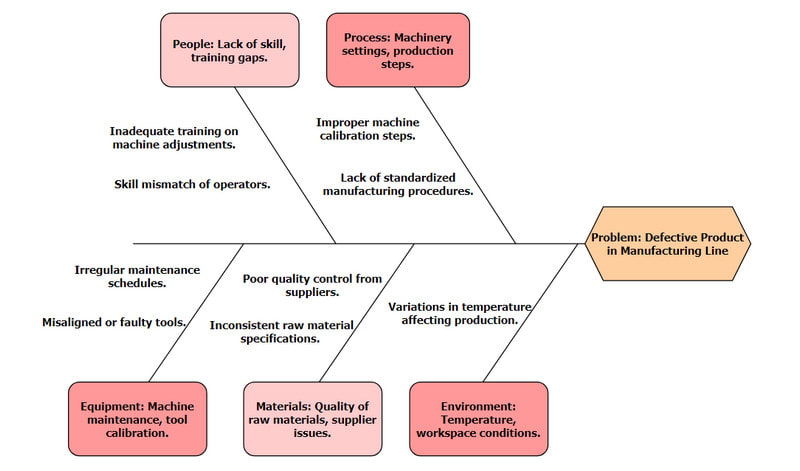
Get a detailed root cause analysis example in manufacturing.
Example 3. Root Cause Analysis Example in E-commerce
Problem: Website Downtime in an E-commerce Company
If you’re in an e-commerce setting, website downtime occasionally happens. It refers to periods when the website is inaccessible or experiences performance issues. Hence, it disrupts all the normal operations done in a company. This downtime negatively impacts the company by causing a potential loss of sales. There will also be frustrated customers. Further, it will crumble the trust of the customer in the reliability of the platform. As for this type of problem, root cause analysis will be a helpful tool to use. The company can easily find the potential causes, including the root causes. Here, we’ll show you an example of its root cause analysis. While also using the FMEA tool for your analysis.
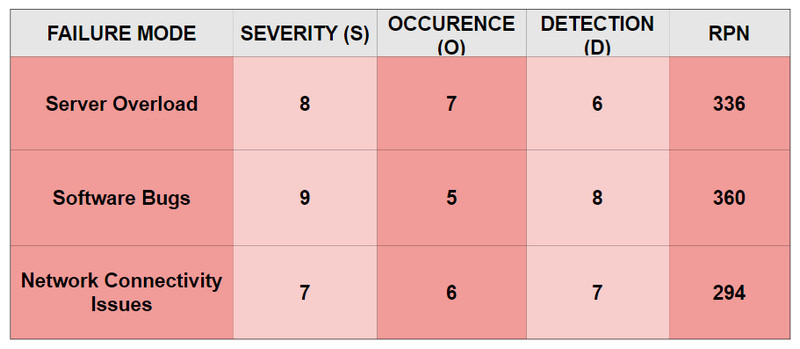
Get a detailed root cause analysis example in e-commerce.
Further Reading
Part 4. FAQs About Root Cause Analysis Template and Example
How do you write a root cause analysis?
1. Start by defining the problem first.
2. Collect relevant information about the problem.
3. Create a timeline of events for your reference.
4. Perform an investigative process to gather facts (interviews, charts, literature reviews).
5. Identify potential contributing factors.
6. Find the root cause of the problem.
7. Develop and put into effect appropriate solutions.
What are the 7 steps of root cause analysis?
Step 1. Describe the problem.
Step 2. Collect data about the problem.
Step 3. Identify contributing factors. Ensure to list all possible causes.
Step 4. Identify root cause(s).
Step 5. Prioritize the root cause(s).
Step 6. Develop actions to address the root cause.
Step 7. Assess the effectiveness of the implemented solutions. Make adjustments if needed.
How to write an RCA template?
To write an RCA template, use this guide:
◆ Title and description: Name the problem and provide a short overview.
◆ Problem statement: Clearly define the issue and its impact.
◆ Data collection: Create sections to gather relevant information about the issue.
◆ Cause analysis: Include areas to list possible contributing factors.
◆ Root cause identification: Provide space to point out the root cause of the problem.
◆ Solution development: Allocate sections to propose corrective actions.
◆ Action plan: Outline steps to implement the chosen solutions.
◆ Monitoring and review: Include a section to track the effectiveness of implemented solutions and any adjustments made.
How to export root cause analysis examples in PDF format?
There are various methods to make your root cause analysis exported in PDF format. If you’re using Microsoft Word, Excel, or PowerPoint, go to File > Save As. Browse and choose a destination folder for it. After that, a window will appear. Select the Save as type drop-down menu, find and select the PDF format option. Now, if you’re using MindOnMap, you can easily do it by clicking Export and selecting the PDF file option.
Conclusion
To conclude, that’s all the root cause analysis templates and examples for your reference. With the help of these, it makes your problem-solving much easier to conduct. Also, you’ve learned the best tool to make visual presentations, which is through MindOnMap. It doesn’t matter whether you’re a pro or a beginner. With its straightforward way, you can create your desired diagram in an instant.









